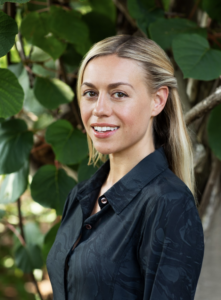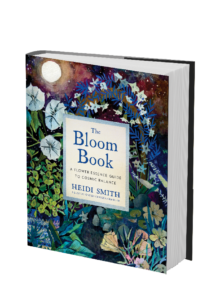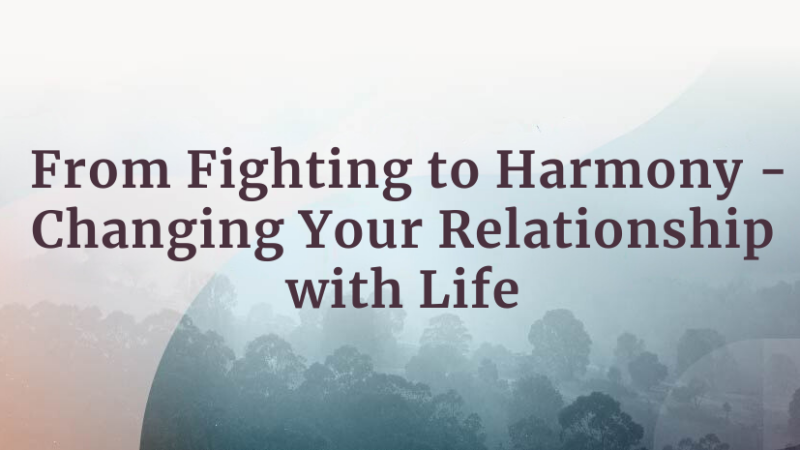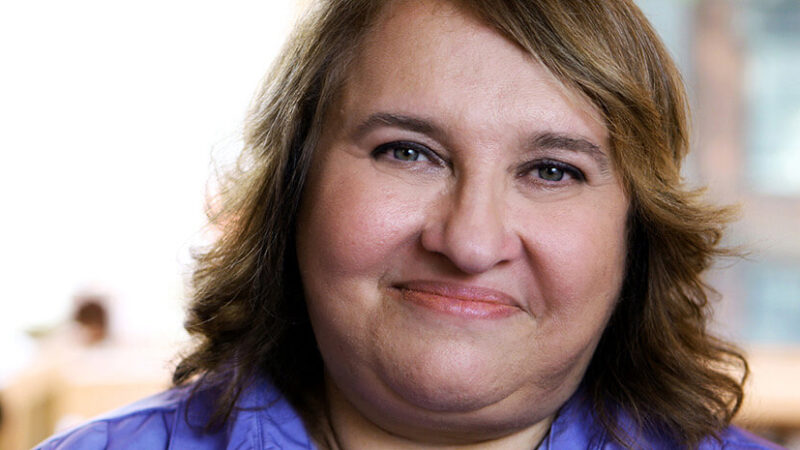-
E117: The Real Work: Letting Go from Within
Michael Singer — October 2, 2025
True spirituality isn’t about mystical experiences or lofty ideals—it’s about honestly facing...
-
Once More: Reflections on Reincarnation and the Gap Between Lives
Tami Simon — September 26, 2025
In this special reflection episode of Insights at the Edge host Tami Simon looks back on her...
-
Honey Tasting Meditation: Build Your Relationship with Sweetness
There is a saying that goes “hurt people hurt people.” I believe this to be true. We have been...
Written by:
Amy Burtaine, Michelle Cassandra Johnson
-
Many Voices, One Journey
The Sounds True Blog
Insights, reflections, and practices from Sounds True teachers, authors, staff, and more. Have a look—to find some inspiration and wisdom for uplifting your day.
Standing Together, and Stepping Up
Written By:
Tami Simon -
The Michael Singer Podcast
Your Highest Intention: Self-Realization
Michael Singer discusses intention—"perhaps the deepest thing we can talk about"—and the path to self-realization.
This Week:
E116: Doing the Best You Can: The Path to Liberation -
Many Voices, One Journey
The Sounds True Blog
Insights, reflections, and practices from Sounds True teachers, authors, staff, and more. Have a look—to find some inspiration and wisdom for uplifting your day.
Take Your Inner Child on Playdates
Written By:
Megan Sherer
600 Podcasts and Counting...
Subscribe to Insights at the Edge to hear all of Tami's interviews (transcripts available, too!), featuring Eckhart Tolle, Caroline Myss, Tara Brach, Jack Kornfield, Adyashanti, and many more.
Most Recent
Is There a Holy Grail of Healing?
Lissa Rankin, MD, is a New York Times bestselling author of multiple books including Mind Over Medicine, a physician, speaker, founder of the Whole Health Medicine Institute and the nonprofit Heal At Last, and mystic. Lissa has starred in two national public television specials, her TEDx Talks have been viewed over 4 million times, and she leads workshops both online and at retreat centers like Esalen, 1440 Multiversity, Omega, and Kripalu.
In this podcast, Dr. Rankin speaks with Sounds True founder, Tami Simon, about her new book, Sacred Medicine: A Doctor’s Quest to Unravel the Mysteries of Healing. Their conversation explores: the placebo effect and the mega-placebo effect; the scientific method and some assumptions we should question; the relationship between trauma, the nervous system, and healing; connectivity and co-regulation; developmental trauma, or what Mark Epstein calls “the trauma of everyday life”; the concept of spiritual bypassing; chronic inflammation as a root cause of many diseases; the paradoxes of healing; our four “intelligences”—mental, somatic, intuitive, and emotional—and what to do when they “disagree”; Internal Family Systems (IFS) therapy and working with the polarized parts within ourselves; healing the collective; and more.
S2 E1: From Fighting to Harmony – Changing Your ...
The world’s great wisdom traditions all speak on the value of surrender. In this episode, Michael discusses what it takes to grow beyond spiritual resistance.
For more information, go to michaelsingerpodcast.com.
© Sounds True Inc. Episodes: © 2024 Michael A. Singer. All Rights Reserved.
Giving Your Heart Over to Real Change
Sharon Salzberg, a student of Buddhism since 1971, has been leading meditation retreats worldwide since 1974. Influenced by her more than 25 years of study with Burmese, Indian, and Tibetan teachers, she teaches intensive awareness practice (vipassana or insight meditation) and the profound cultivation of lovingkindness and compassion (the Brahma Viharas). She is a cofounder of the Insight Meditation Society and the Barre Center for Buddhist Studies, both in Massachusetts. She is the author of books including The Kindness Handbook, Lovingkindness, A Heart as Wide as the World, and, most recently, Real Change. She has also authored several Sounds True audio programs including Insight Meditation (with Joseph Goldstein), Room to Breathe, and Lovingkindness Meditation.
In this podcast, Sharon Salzberg joins Sounds True’s founder, Tami Simon, to discuss her recent book, Real Change: Mindfulness to Heal Ourselves and the World—and how you can begin to bring the core of your being into your work, your community, and your life. Sharon and Tami also discuss how contemplative practices can open the heart, agency and reclaiming your power to effect change, the empowering symbol of the Statue of Liberty, transforming anger into courage, determining the next step you can take when you’re uncertain, patience, faith as the act of giving over your heart, generosity and how you end up with more through giving, moving from grief to resilience, suffering and the First Noble Truth, the role of joy on the path, living by the truth of interconnection, caring to know as the first step in making a difference, and a sneak preview of Sharon’s forthcoming book, Real Life.
Customer Favorites
DIY Rose Essence and Heart Breathing Ritual
The heart chakra is the central integrating chamber of the chakra system. Through the healing power of love, all things eventually find their way to connection and wholeness.
ANODEA JUDITH
Heart Medicine Rituals
The greatest lesson I have learned so far is to exist within my heart. This is a lifelong practice for me because, like many, I was not taught to inhabit my heart space. On a physical level, the general collective is not doing so well in our hearts. This is evidenced by the stark reality that heart disease is the leading cause of death worldwide. This high incidence of disease points to a deeper situation of the heart, but in order to be open to the possibility that more profound heart healing is necessary and possible, we must open our minds to a more metaphysical or energetic interpretation of what the heart is and what it does. Ancestrally, the heart held a much higher evolutionary significance, and as our consciousness split, we moved from inhabiting our hearts to glorifying our minds. Perhaps this disconnect can illuminate some clues for us to consider to reclaim more balance within our hearts, ourselves, and our world.
Vibrationally, the heart contains the strongest electromagnetic field of any organ in the body. Transference of heart energy can occur in close proximity with another human or animal; and if you apply the theories of quantum entanglement and wave function collapse, transference of heart energy can resonate beyond space or time. Plants and the elements, too, can have a positive entrainment effect on the heart, reiterating the interconnectedness of all life and the organic balance nature engenders. In both traditional Chinese and Tibetan medicines, the heart is the mind. In TCM, grief is stored in the lungs and closely related to the heart. The Hopi defined harmony as one’s heartbeat in resonance with others and the Earth.
Our liberation is tied to the heart. The cost of liberation is unique to every person and is cosmically linked to each of us. The price of liberation varies for each individual, but we are given choices: in what we think, what we feel, what we believe, how we want to be. The inability to see choice is the unconsciousness of the fear-based toxic masculine that seeks to keep us disconnected and disempowered.

Our liberation depends largely on our ability to love unconditionally. Unconditional love means loving without circumstance or codependence. This can take different forms, from exiting a toxic relationship to taking more care of yourself. And it doesn’t stop there. If you want to get really free, you have to love yourself no matter what, and love all beings no matter what. Tall order? Yes. Impossible? No! While humans are conditioned to be in separation, plants (and animals) hold only unconditional love for all life. There are people on this Earth who radiate unconditional love, and when you are in their company, your heart is completely relaxed and open. For instance, my heart feels completely free when I am with people and animals who love me unconditionally. My heart also feels free in this way when I am in nature. Can you think of anyone who loves you unconditionally? Or perhaps it’s easier to think of an animal or pet? What if you loved yourself and everyone like that? What if you loved all your uncomfortable parts, illnesses, and neuroses like that?
EXERCISE: Making a Rose Essence and Heart Breathing Exercise
There are a few plants whose application is almost universal, and the rose is one such flower. Roses hold the frequency of unconditional love and have an affinity for the heart chakra. This ritual works best with either a wild growing or organically cultivated rose; it can be any species within the Rosa genus. Some of the lower vibratory states that can be addressed with rose include grief, loss, heartbreak, depression, and panic.
This ritual is very simple. You’re going to combine the process for making your own medicine (see a simple how-to video here) using the rose of your choice, with the heart breathing exercise that follows. The heart breathing can be done while the flowers are in the water, working their magic. The heart energy you engage during the medicine-making process will become part of the energetic signature of your flower essence. After you bottle it and make the dosage bottle, take a few drops and see what you notice around your heart. Be sure to notate your findings. You now have a rose flower essence for your apothecary whenever you or someone else needs it.
HEART BREATHING RITUAL
After you have placed the flowers in the bowl with the water, sit comfortably on the ground, if possible. Close your eyes or set your gaze low. Place both hands over your heart and begin to breathe into the heart space. Visualize the rose you are working with. Notice how the breath moves in and out of the heart—not forcing the air, just allowing it to move. See if you can sense into how the heart is feeling—in the front, in the back, all sides. Be sure to breathe into the back of the heart space. Notice how the heart feels when you place your awareness on it. See if it’s okay to allow whatever is arising, witnessing without judgment.
After a few minutes, begin to bring the heart back into a neutral position. Thank your heart and the spirit of rose for sharing with you. Feel your body making contact with the Earth, deepen the breath, and slowly open your eyes.
The video on how to make your own flower essence medicine can be found here.
This is an excerpt from The Bloom Book: A Flower Essence Guide to Cosmic Balance by Heidi Smith.


Heidi Smith, MA, RH (AHG), is a psychosomatic therapist, registered herbalist, and flower essence practitioner. Within her private practice, Moon & Bloom, Heidi works collaboratively with her clients to empower greater balance, actualization, and soul-level
healing within themselves. She is passionate about engaging both the spiritual and scientific dimensions of the plant kingdom, and sees plant medicine and ritual as radical ways to promote individual, collective, and planetary healing. She lives in Brooklyn, New York, with her partner and two cats. For more, visit moonandbloom.com.
Learn More
Sounds True | Amazon | Barnes & Noble | Bookshop
Spiritually Fly
Faith Hunter has nearly 20 years of experience as a yoga and meditation teacher. She is the founder of Embrace Yoga DC and Embrace OM, as well as the creator of Spiritually Fly, a lifestyle philosophy that celebrates our inherent vibrancy and worth. With Sounds True, Faith has written a new book called Spiritually Fly: Wisdom, Meditations, and Yoga to Elevate Your Soul. In this episode of Insights at the Edge, Tami Simon speaks with Faith about what it means to be Spiritually Fly and how we can all live an authentic, joyful life of spiritual flyhood. They discuss the life-changing effect yoga had on Faith’s life and the courageous way she empowered herself to blend classic yoga lineages with sound, ritual, and African traditions to create a practice that is true to her. And Faith describes the “golden glitter”—the inner brilliance—that lies beneath our fear, shame, and other “demons,” waiting to be released into the world.
Karen Brody: Daring to Rest
Karen Brody is the founder of the Daring to Rest™ Program for Women, which promotes women’s empowerment and increased health through yoga nidra meditation. With Sounds True, Karen has published Daring to Rest: Reclaim Your Power with Yoga Nidra Rest Meditation. In this episode of Insights at the Edge, Karen and Tami Simon have a serious discussion about the epidemic of burnout and exhaustion in modern culture. This is especially true for women, who are often held to the societal expectation that they serve the needs of those around them before they ever consider taking even the most necessary rest. Karen offers yoga nidra as a one part of the solution to this wave of fatigue, describing how her own practice and the cultivation of turiya—”the sleep of the yogis”—helped her move past a period of intense, chronic sleeplessness. Finally, Karen and Tami speak on the liberation in abandoning perfectionism and how yoga nidra can be folded into the course of our daily lives. (64 minutes)






